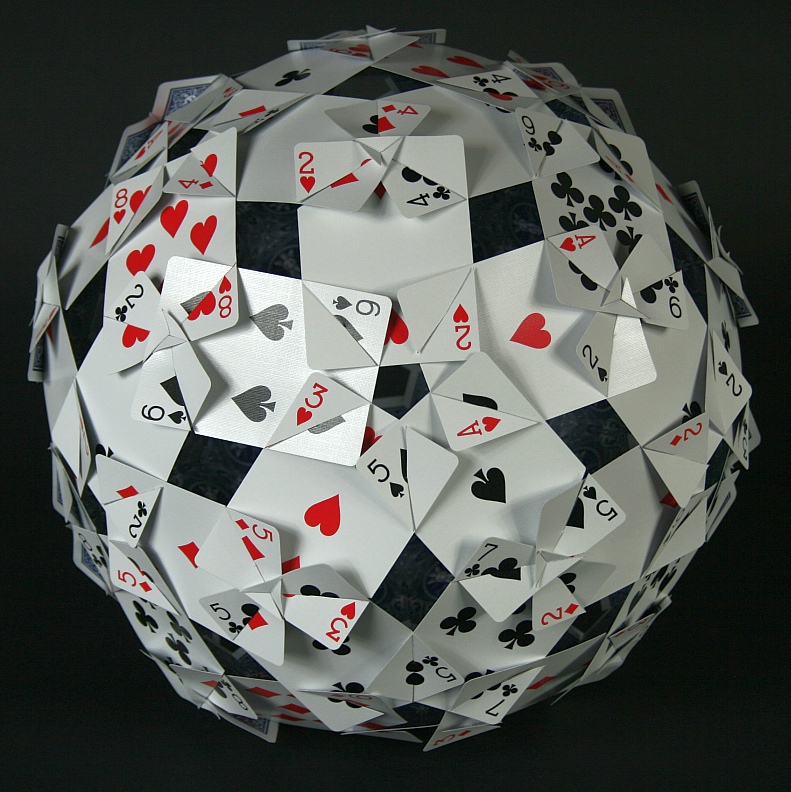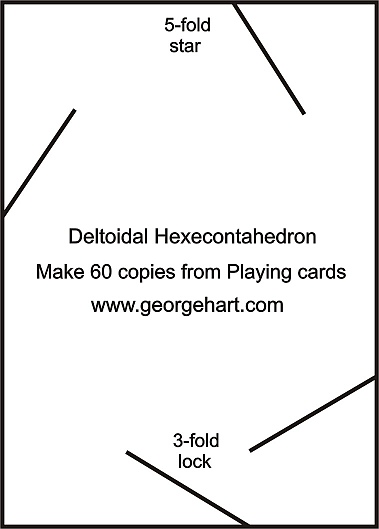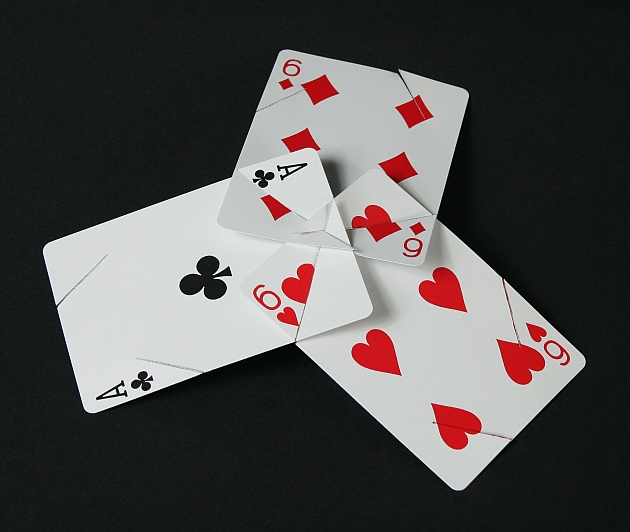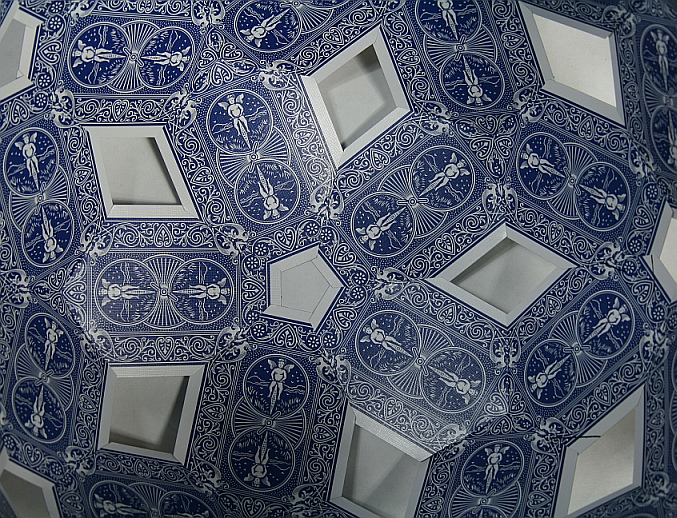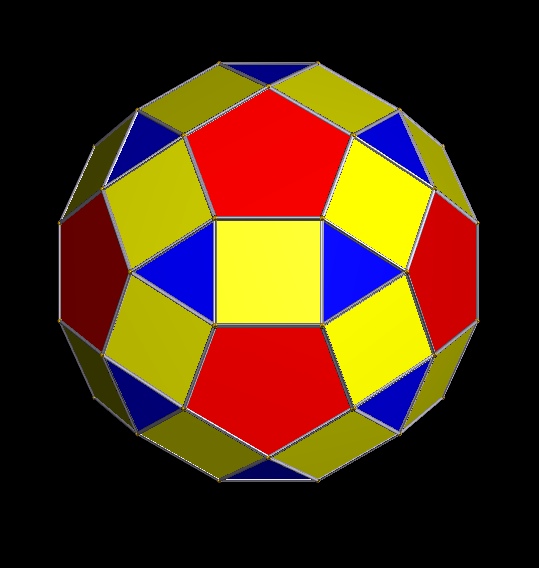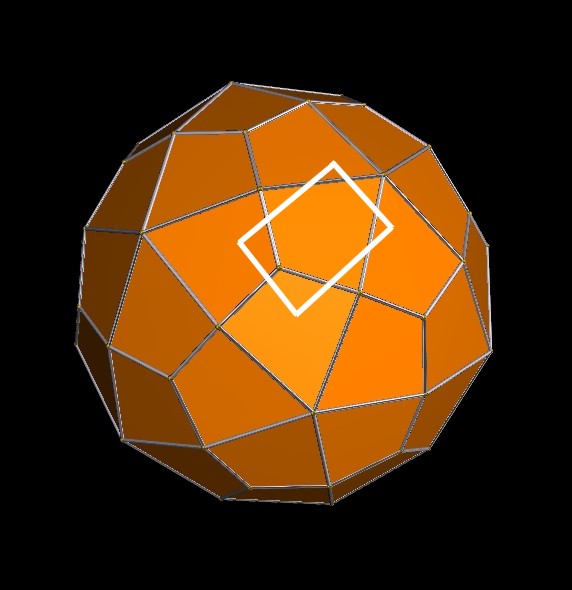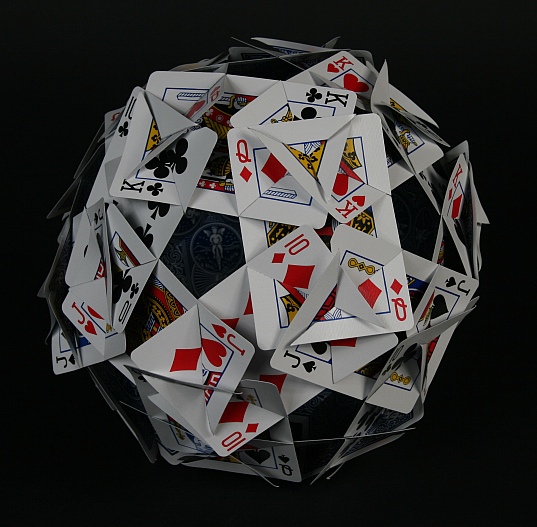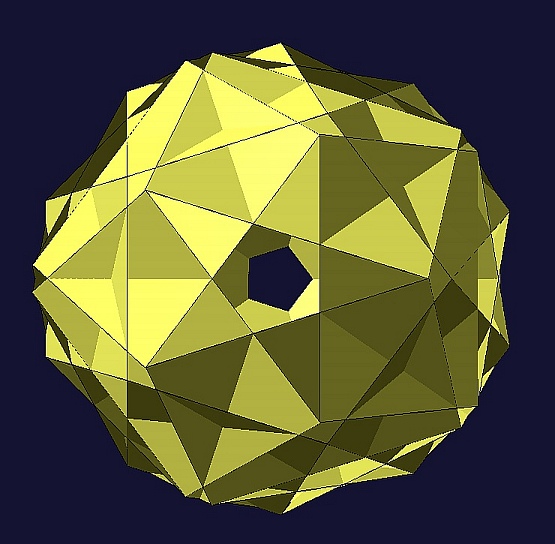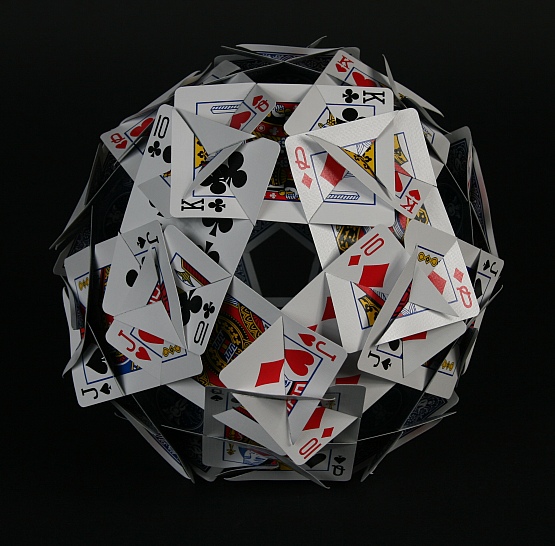Above is a rhombicosidodecahedron, one
of the Archimedean solids. It is "uniform on its vertices" , which
means that every vertex is equivalent. At each vertex there is a
pentagon, a square, a triangle, and another square. There are 60
vertices.
Above is the dual to the
rhombicosidodecahedron. It has 60 faces. You can derive it
(approximately) by putting a dot in the center of each
rhombicosidodecahedron face. The four dots that surround any one
rhombicosidodecahedron vertex become the vertices of one kite-shaped
face of this dual. So all the faces are equivalent. It is
"uniform on its faces". This polyhedron is called either the
"trapezoidal hexecontahedron" or the "deltoidal hexecontahedron"
depending on which book you check. It is one of the
Catalan polyhedra.
Our construction replaces each face with a card. The position of one
card is sketched above, in white. It lies in the plane of one face,
extending past the face at the corners of the card. Part of the card
goes beyond the face at the 3-fold vertex, so when three cards overlap
there, they lock. At the other end of the card, it does not quite reach
the 5-fold vertex, so there are 5-fold openings in our construction.
Also, the sides of the cards do not quite reach the 4-fold vertices, so
there are 4-sided openings in our construction.
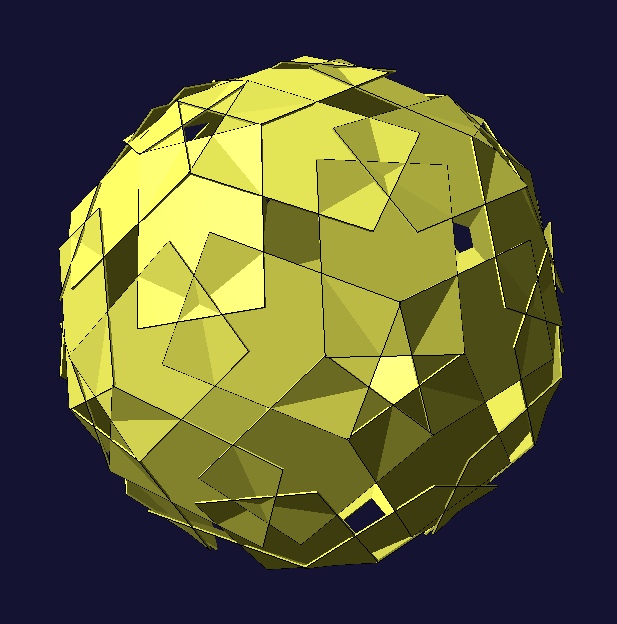
Above is a computer rendering of the
construction. I chose this
polyhedron because it has 60 identical faces and the faces have
bilateral symmetry. But many other polyhedra can be adapted to
this
slide-together technique. That is left as an exercise for others.
Second Construction --- 30 Cards
This is an 8-inch diameter construction in which the 30 cards have more
overlap, so it is trickier to make. All the joints are 3-fold
locks, so it holds together very tightly. You can throw this
around a room and it will not come apart, whereas the 60-card
construction easily comes apart at its 5-fold stars. But because
the locks are deeper, it is probably not a good construction to try
first. The template to make your own is
here. Both ends of the cards have
equivalent cuts in this construction, so you don't have to worry about
which end is which. If you already made the 60-card construction, this
should be pretty straightforward once you figure out how to make one of
these deeper 3-fold locks.
I like the 5-fold stars which arise on the sides of the cards.
The geometry of this construction is the same as
the slide-togethers
with squares, except that I've used a rectangle instead of
squares. This requires that the relative size of the triangles
and stars change. I've make one particular choice for that change
here, based on my aesthetic preferences. In Francesco De
Comité's version, shown
here,
he
made a different choice. His has no 3-fold locks at all, as
his cards are turned 90 degrees from my version. So his has
triangular openings instead of locks, and the cards are less obscured
in his version. This may make his easier to assemble, but also
easier to fall apart. Take your pick or make both!
Here's a view looking directly at one
of the twelve 5-fold stars.
